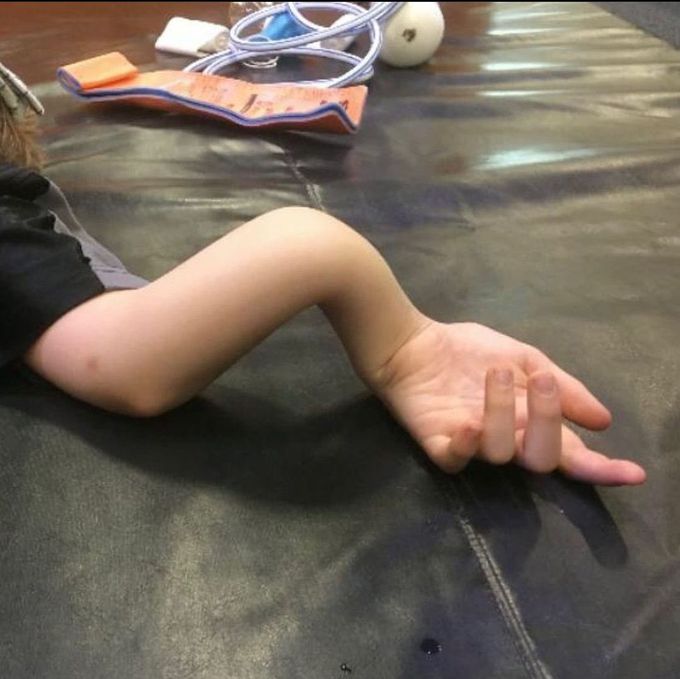


High fived too hard ❓️❓️
Here's a dodgevall injury that resulted in radius and ulnar shaft fracture , aka broken forearm !! The injury may be sustained from a direct blow or an indirect injury involving a bending or rotational force placed on the forearm . The patient with a midshaft forearm fracture typically complains of pain , and possibly deformity , at the site immediately following trauma . The mechanism involves either low energy ( eg , ground - level fall , especially in older adults ) or relatively high energy ( eg , motor vehicle accident , collision during sporting event ) . Physical examination begins with visual inspection , which may reveal swelling and an obvious deformity , suggesting a displaced fracture , or a wound overlying the fracture site ( ie , open fracture ) requiring immediate surgical evaluation . Range of motion may be limited due to pain , and testing should be performed gently , judiciously , and only if there are no obvious signs of displaced fracture or dislocation . In cases of suspected midshaft forearm fracture , anteroposterior and lateral radiographs showing the entire length of the radius and ulna are usually diagnostic . Due to significant displacement , the initial treatment is closed reduction that is attempted when fracture angulation exceeds 10 degrees or displacement exceeds 50 % . Reduction involves placing the patient's affected arm in finger traps while the brachium is secured with a strap or weights . This setup allows for ready manipulation of the forearm and rapid splinting once reduction is achieved . After satisfactory alignment is achieved , the fractured arm is placed in a long - arm posterior splint with the elbow at 90 degrees and the wrist in neutral ( ie , without supination or pronation ) and slight extension for 7 to 10 days . After the period of immobilizaion , the cast or splint is removed , and the patient is placed in a functional forearm brace for four to six more weeks . The functional brace , which is generally custom - made to fit the patient , allows full flexion and extension at the elbow and wrist and full pronation and supination of the forearm .

